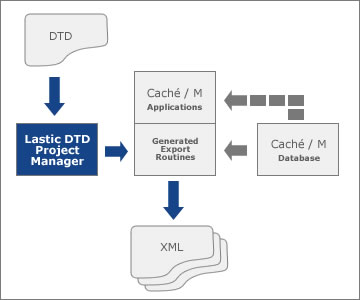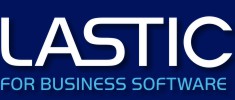Overview
The Trouble With XML
Extensible Markup Language (XML) is revolutionizing the way applications talk to each other. The need for business software to expose / generate data in XML format is increasing day by day. New applications need developing, existing ones require updating.
The need for XML generation tools has never been greater. However, there are very few such tools available for the Caché / M environment. To our knowledge there are none which are platform independent. If your target platform is not version 5+ of Caché you will most likely have to write the XML generation code yourself. Creating the tag structures, ensuring closing tags match the opening tags, making sure elements are nested correctly, entity references are appropriately escaped, attribute values correctly delimited, etc. And what you will undoubtedly find is that too much development time is devoted to the XML syntax rather than the business rules and data requirements of the application.
And that's just the initial development. Data requirements change continually. Your generation routines will change regularly. And they will probably get ever more complex.
The Solution
The Lastic DTD Project Manager (L-DPM) helps overcome many of the problems associated with the development and maintenance of XML generation software.
The L-DPM creates XML export routines based on specified DTDs. These routine interfaces provide a standard way to generate XML content in your business applications.

Components
The L-DPM consists of two components:
- GUI Interface
The L-DPM application itself is a GUI environment using Lastic GUI and as such requires the appropriate client PC software and host Caché / M system database drivers available from Lastic.
The application provides a simple and easy-to-use environment for importing and editing DTDs within your Caché / M system. The L-DPM incorporates the Routine Generator function for creating XML export routines based upon these DTDs. Additional facilities include the ability to re-export DTDs to PC files and the grouping of DTDs into 'Projects', simplifying the management and maintenance of project software.
DTDs will be enhanced using pseudo comment lines to specify the database access requirements for each element including any re-formatting of attributes.

- Routine Generator
The Routine Generator function lies at the heart of the software to create the XML export routine from a specified DTD. It is available independently of the L-DPM and as such does not require any Lastic GUI software to be installed on your system.
The routine generator analyses the DTD and incorporates external references automatically from the same project. It determines the structure of the required document including repeating and choice elements/groups and individual element attribute definitions including default values. It then creates a Mumps routine which obeys the structure of the DTD to ensure a well formed XML document is produced every time.
The function is written in ANSI Standard Mumps (1990) and will run on all major Caché / M implementations. The generated export routines write XML content directly from your Caché / M database to any specified output device.
Run-time Facilities
At run-time, a parent application will open the required output device and call the export routine, passing any parameters by value (e.g. order number). Upon return, the parent application will merely close the device. The result is an XML document which conforms to the DTD definition. Device opening and closing are externalised from the software in order to provide flexibility for operation across the range of devices, Caché / M implementations and platforms available.
Options available at run-time include element indentation and whether element attributes are produced on a single line or each attribute on a separate line. The runtime library routine will also automatically add any default attributes not generated by the application.
|

